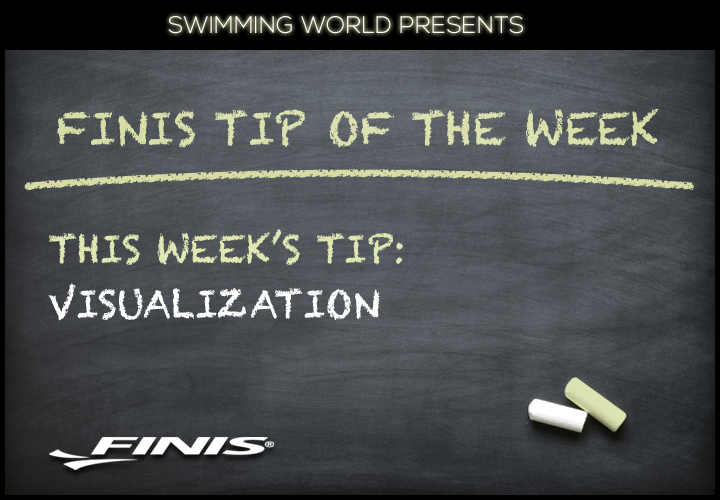FINIS Training Tip of the Week: Visualization

Welcome to the “Training Tip of the Week.” Swimming World will be bringing you a topic that we’ll explore every month with drills and concepts for you to implement with your team on a regular basis. While certain weeks may be more appropriate for specific levels of swimming (club, high school, college, or masters), Training Tips of the Month are meant to be flexible for your needs and inclusive for all levels of swimming.
This month’s training tip of the week series is centered around Mental Training. The mind is an incredibly powerful force in any part of your life, and more and more swimmers and coaches are realizing the huge benefit that working on the mental approach to practices and competitions can have.
This week will build on the previous two week’s articles about mindfulness and meditation, focusing on practicing sport-specific visualization. Visualization is also often referred to as mental imagery, guided imagery, among other terms. Whatever the term the goal is the same: develop a mental blueprint for your race that will allow you to approach competitions feeling more prepared and confident.
Draw Your Mental Blueprint…
A major part of visualization is getting in the right frame of mind to be able to accurately imagine your race in your mind. For many, this will mean getting into a mindful or meditative state, which is one of the reasons those are great mental skills to start with when beginning a mental training routine.
Clearing your mind and focusing nonjudgmentally is key to finding the focus you need for effective visualization. As noted in an article that appeared in The New York Times in the leadup to the 2016 Rio Olympics, the best visualization is extremely specific. Work on thinking about all of the little details of your race: When will I warm up? How will my stroke feel? What will my breathing pattern be? The more specific your visualization, the more prepared you will be for all of the components that go into your race.
If you get something wrong in your own mind, don’t panic! It’s your visualization, so you can always rewind, start over, or re-focus on what you want the positive result to be. It can also be helpful to imagine how you will react when things DO go wrong: what happens if my goggles break? What if warm up is crowded? What if I’m in an outside lane? Planning for all of these scenarios allows you to acknowledge their possibility, have a plan for solving them, and ultimately get back to the factors in your race that you can control.
Practice, Practice, Practice…
There are ultimately a multitude of ways for you to be able to incorporate this into your mental training routine, and the direction it takes should largely be driven by what feels best for you. A lot of people find it difficult to visualize their entire race from start to finish without stopping or messing something up. That is okay! As with any skill, the more you practice the more consistently you will be able to practice visualizing your races in a positive way.
All swimming and dryland training and instruction should be performed under the supervision of a qualified coach or instructor, and in circumstances that ensure the safety of participants.



